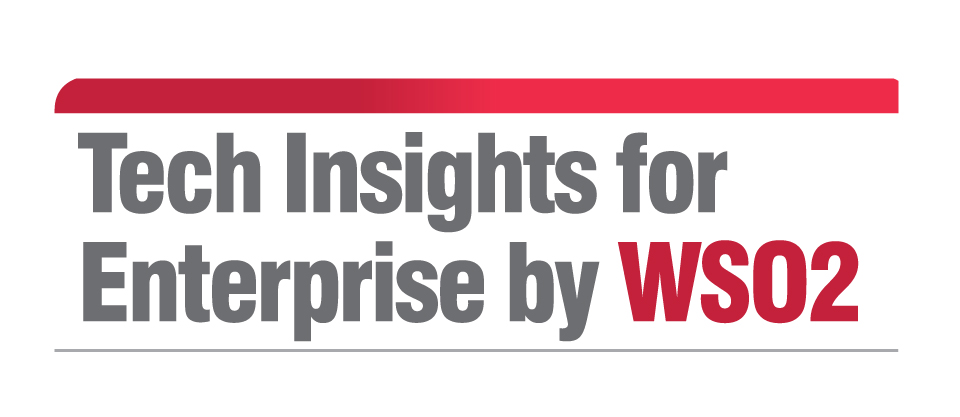Sunday Dec 07, 2025
Sunday Dec 07, 2025
Friday, 28 October 2016 00:01 - - {{hitsCtrl.values.hits}}
 By Nuwan Bandara
By Nuwan Bandara
Sri Lanka’s healthcare industry has evolved over the years, constantly providing new services to make our lives easier. Its standard can be compared to that of the better developed countries in the region. Some healthcare institutions today even provide e-channelling and e-consulting. But we still have a long journey to endure before reaching where we need to be in terms of providing a holistic healthcare ecosystem that further streamlines these processes, both between institutions and citizens, as well as with other third-party organisations, such as insurance companies.
There are still processes that are done manually, especially in public healthcare institutions, which means more time is consumed, there are delays when processing information and the chance of human error is higher. This affects patient satisfaction and in turn can be detrimental to business growth.
Connected health aims to integrate disparate systems, devices, and stakeholders to provide healthcare in a collaborative manner. Both government and private institutions can leverage this to create an infrastructure that provides patients with the best possible medical services in a fast and efficient manner. By connecting to financial and insurance companies you can make payments hassle-free for patients and create synergies that allow you to leverage each other’s capabilities. By becoming connected, healthcare institutions in Sri Lanka can provide accurate and timely information, reduce human errors, and make medical information easily available to all the entities involved.
Connected healthcare offers a competitive edge
There are many technical aspects that need to be considered when connecting the healthcare industry, one of which is interoperability. In the healthcare industry, many different devices are used to collect data that are recorded in different formats and protocols. To achieve efficiency, there needs to be a central place where all these devices are linked and their data is transformed into a format that can be used by the services offered to the patients and other stakeholders of the industry. To do this you need a comprehensive integration solution.
 Additionally, data gathered from various places will usually be stored in multiple locations in different formats. This data needs to be pulled from these locations, consolidated, aggregated and checked for redundancies before being processed and sent to the correct entity. This is a key aspect since it ensures the accuracy and relevancy of the data used by both medical and non-medical entities. For this, you need to implement a data integration solution to source data from disparate systems.
Additionally, data gathered from various places will usually be stored in multiple locations in different formats. This data needs to be pulled from these locations, consolidated, aggregated and checked for redundancies before being processed and sent to the correct entity. This is a key aspect since it ensures the accuracy and relevancy of the data used by both medical and non-medical entities. For this, you need to implement a data integration solution to source data from disparate systems.
The next step would be to focus on confidentiality and security of the data that’s being unified. The integrity of the data needs to be ensured when it is accessed and put into a system. This means you need to check who’s accessing the data, from where they’re accessing the data, who created the data, etc. When a request for data comes in, your ecosystem should check if the request is authentic to avoid sensitive medical information going into the wrong hands.
Finally, when an action is performed (such as a patient is admitted/discharged/transferred to a hospital), it should generate an event that is pushed into various relevant systems. Apart from this, the system itself will generate alerts to the patient, healthcare institution or other entities. For example, when a patient is admitted, a request needs to be made to collect their medical data and an alert should be sent to the insurance company informing them of the admittance. All these events need to be processed and analysed. Then actions need to be taken based on certain rules. For this final aspect, you need to implement complex health event processing. When the devices and systems start pushing events, they need to be directed to the integration system. Events are then analysed in a batch-like manner and the results are used to generate useful dashboards or they are processed in real-time, based on rules defined by internal and external systems, and certain actions will be triggered.
Once you create a connected healthcare system using the above-mentioned components, you need to look into its deployment aspects. It has to be highly available and scalable and also needs to be able to handle high loads, especially during peak times. To ensure all this and create a seamless ecosystem, enterprise IT middleware has been proved useful for many reasons - it provides an affordable and flexible solution that enables rapid innovation. It doesn’t have to cost millions to get going either. Institutions such as IMS Health, ZeOmega and other global healthcare institutions have successfully used WSO2’s 100% open source middleware capabilities to deliver their connected healthcare needs.
People ultimately expect seamless, efficient and hassle-free medical services, whether they come in for a routine consultation or for a more serious medical issue. By becoming a connected healthcare ecosystem, you will be able to meet these standards set by your consumers, expand your business, increase revenue, and ensure better return on investment while staying ahead of the game.
(The writer is an Associate Director and Solutions Architect at WSO2 who works closely with WSO2 customers on enterprise solutions. His experience spans across multiple verticals such as e-government, education, e-commerce and healthcare. Prior to joining the WSO2 solutions architecture team, he was a product lead in the WSO2 engineering team, providing technical leadership. He has also contributed to open source projects Apache Web Services and Apache Shindig projects of the Apache Software Foundation. For comments/feedback on this article email: [email protected]).